Archives
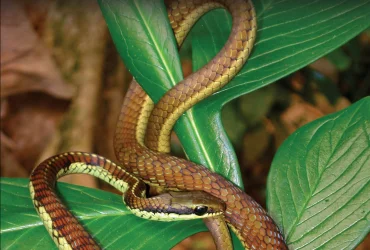 v3i2.56
v3i2.56ISSN: 1800-427X (print)
eISSN: 1800-427X (online)
DOI:10.47605/tapro.v3i2.56
Submitted date: 15 October 2011
Accepted date: 01 November 2011
Published date: 20 December 2011
Pp. 107–109.
Rare mammals recorded in Borneo – Malaysia
Lee E. Harding*
*E-mail: harding@sciwrite.ca
While on a wildlife-watching trip to Sabah, Borneo, May 21 to June 5, 2011, Jeffrey Harding and I saw several rare and endangered mammal species whose distributions are not well known. Following is a list of the rarest ones with notes on location, elevation, and conservation status. Elevations were taken with a Barigo altimeter. Conservation status notes are based on IUCN (2011). Taxonomy follows Wilson & Reeder (2005). Evidence included field notes and photographs for most species mentioned below. I offer these notes in case they may be of use in future conservation efforts or distribution studies.
Section Editor: Colin Groves
eISSN: 1800-427X (online)
DOI:10.47605/tapro.v3i2.56
Submitted date: 15 October 2011
Accepted date: 01 November 2011
Published date: 20 December 2011
Pp. 107–109.
Rare mammals recorded in Borneo – Malaysia
Lee E. Harding*
*E-mail: harding@sciwrite.ca
While on a wildlife-watching trip to Sabah, Borneo, May 21 to June 5, 2011, Jeffrey Harding and I saw several rare and endangered mammal species whose distributions are not well known. Following is a list of the rarest ones with notes on location, elevation, and conservation status. Elevations were taken with a Barigo altimeter. Conservation status notes are based on IUCN (2011). Taxonomy follows Wilson & Reeder (2005). Evidence included field notes and photographs for most species mentioned below. I offer these notes in case they may be of use in future conservation efforts or distribution studies.
Section Editor: Colin Groves
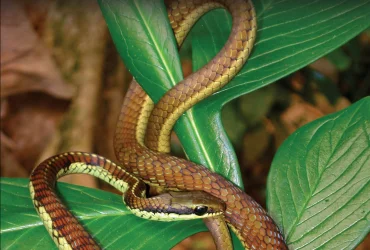 v3i2.55
v3i2.55ISSN: 1800-427X (print)
eISSN: 1800-427X (online)
DOI:10.47605/tapro.v3i2.55
Submitted date: 15 October 2011
Accepted date: 01 November 2011
Published date: 20 December 2011
Pp. 104–106.
First Report of a Cerambycid beetle (Capnolymma cingalensis) from India
H.V. Ghate*, C.A. Viraktamath & R. Sundararaj
*Corresponding author. E-mail: hemantghate@gmail.com
Lepturinae are a group of Cerambycidae that can be recognized by their peculiar form, especially the head being prolonged behind into a ‘neck’.
Section Editor: Eduard Vives
eISSN: 1800-427X (online)
DOI:10.47605/tapro.v3i2.55
Submitted date: 15 October 2011
Accepted date: 01 November 2011
Published date: 20 December 2011
Pp. 104–106.
First Report of a Cerambycid beetle (Capnolymma cingalensis) from India
H.V. Ghate*, C.A. Viraktamath & R. Sundararaj
*Corresponding author. E-mail: hemantghate@gmail.com
Lepturinae are a group of Cerambycidae that can be recognized by their peculiar form, especially the head being prolonged behind into a ‘neck’.
Section Editor: Eduard Vives
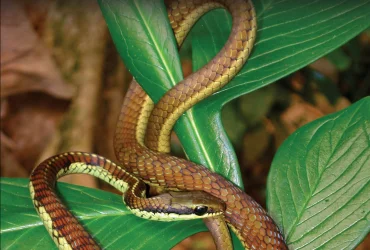 v3i2.54
v3i2.54ISSN: 1800-427X (print)
eISSN: 1800-427X (online)
DOI:10.47605/tapro.v3i2.54
Submitted date: 10 August 2011
Accepted date: 22 August 2011
Published date: 20 December 2011
Pp. 102–103.
First record of banded krait (Bungarus fasciatus) from Pilibhit District, Uttar Pradesh - India
Meraj Anwar*
*E-mail: anwar.meraj@gmail.com
The banded krait, Bungarus fasciatus (Schneider, 1801) is one of the venomous elapids of the genus Bungarus Daudin, 1803, widely distributed in South and South-East Asia.
Section Editor: Gernot Vogel
eISSN: 1800-427X (online)
DOI:10.47605/tapro.v3i2.54
Submitted date: 10 August 2011
Accepted date: 22 August 2011
Published date: 20 December 2011
Pp. 102–103.
First record of banded krait (Bungarus fasciatus) from Pilibhit District, Uttar Pradesh - India
Meraj Anwar*
*E-mail: anwar.meraj@gmail.com
The banded krait, Bungarus fasciatus (Schneider, 1801) is one of the venomous elapids of the genus Bungarus Daudin, 1803, widely distributed in South and South-East Asia.
Section Editor: Gernot Vogel
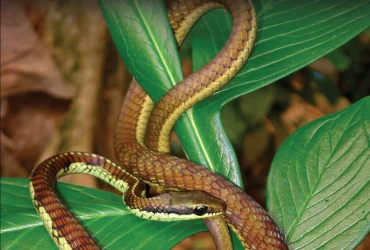 v3i2.53
v3i2.53ISSN: 1800-427X (print)
eISSN: 1800-427X (online)
DOI:10.47605/tapro.v3i2.53
Submitted date: 29 June 2011
Accepted date: 30 November 2011
Published date: 20 December 2011
Pp. 96–101.
TAXONOMY IN INDIA IN THE 21ST CENTURY: CALL FOR A DIGITAL REVIVAL
V.M. Sathish Kumar*
*E-mail: drsathishkumarvm@gmail.com
Abstract
The Biodiversity of the planet is under threat due to various reasons. For the conservation and management of the bio-resources we need to precisely identify a species, so that the species can be accessed and managed accordingly. This is the very first basic step every taxonomist has to take. Though Traditional taxonomy has been used in systematics for over 250 years with the identification of more than 1.75 million species, in many countries as in India, traditional taxonomy is yet to adopt the latest molecular techniques available for a better and accurate identification of taxa. Enhanced taxonomic infrastructure and research tools can certainly allow Indian taxonomists to speed up the process of species exploration, description and classification which will enable the World scientific community to get access to India's flora and fauna dynamically without excuses of reduced funding or dearth of taxonomists for not mapping the biological diversity of India. This article overviews the latest digital advancements to revolutionize taxonomical research in India in the current century.
Key words : biodiversity, molecular systematics, internet, ATI, CAT
Section Editor: Colin Groves
eISSN: 1800-427X (online)
DOI:10.47605/tapro.v3i2.53
Submitted date: 29 June 2011
Accepted date: 30 November 2011
Published date: 20 December 2011
Pp. 96–101.
TAXONOMY IN INDIA IN THE 21ST CENTURY: CALL FOR A DIGITAL REVIVAL
V.M. Sathish Kumar*
*E-mail: drsathishkumarvm@gmail.com
Abstract
The Biodiversity of the planet is under threat due to various reasons. For the conservation and management of the bio-resources we need to precisely identify a species, so that the species can be accessed and managed accordingly. This is the very first basic step every taxonomist has to take. Though Traditional taxonomy has been used in systematics for over 250 years with the identification of more than 1.75 million species, in many countries as in India, traditional taxonomy is yet to adopt the latest molecular techniques available for a better and accurate identification of taxa. Enhanced taxonomic infrastructure and research tools can certainly allow Indian taxonomists to speed up the process of species exploration, description and classification which will enable the World scientific community to get access to India's flora and fauna dynamically without excuses of reduced funding or dearth of taxonomists for not mapping the biological diversity of India. This article overviews the latest digital advancements to revolutionize taxonomical research in India in the current century.
Key words : biodiversity, molecular systematics, internet, ATI, CAT
Section Editor: Colin Groves
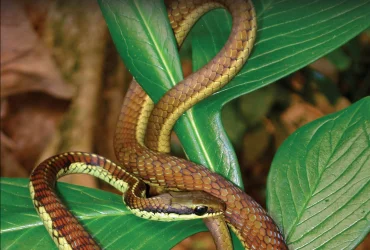 v3i2.52
v3i2.52ISSN: 1800-427X (print)
eISSN: 1800-427X (online)
DOI:10.47605/tapro.v3i2.52
Submitted date: 8 August 2011
Accepted date: 30 November 2011
Published date: 20 December 2011
Pp. 93–95.
A NEW SPECIES OF Sonerila (MELASTOMATACEAE) FROM THE WESTERN GHATS - INDIA
M. Murugesan* & V. Balasubramaniam
*Corresponding author. E-mail: taxonmurugesh@gmail.com
Abstract
A new species of Sonerila Roxburgh (Melastomataceae) is described and illustrated. Sonerila nayarana sp. nov. occurs in the Velliangiri hills, the Western Ghats in the Coimbatore District, Tamil Nadu, India. It seems most similar to Sonerila parameswaranii Ravikumar & Lakshmanan, 1999.
Key words : taxonomy, Sonerila nayarana, Coimbatore, Tamil Nadu
Section Editor: Prasad Senadheera
eISSN: 1800-427X (online)
DOI:10.47605/tapro.v3i2.52
Submitted date: 8 August 2011
Accepted date: 30 November 2011
Published date: 20 December 2011
Pp. 93–95.
A NEW SPECIES OF Sonerila (MELASTOMATACEAE) FROM THE WESTERN GHATS - INDIA
M. Murugesan* & V. Balasubramaniam
*Corresponding author. E-mail: taxonmurugesh@gmail.com
Abstract
A new species of Sonerila Roxburgh (Melastomataceae) is described and illustrated. Sonerila nayarana sp. nov. occurs in the Velliangiri hills, the Western Ghats in the Coimbatore District, Tamil Nadu, India. It seems most similar to Sonerila parameswaranii Ravikumar & Lakshmanan, 1999.
Key words : taxonomy, Sonerila nayarana, Coimbatore, Tamil Nadu
Section Editor: Prasad Senadheera
Hubungi Kami
The ultimate aim of the journal is to provide an effective medium for communication of the latest and best scientific information.
Copyright © 2020 Taprobanica. All Rights Reserved
Jasa Pembuatan Website by IKT




